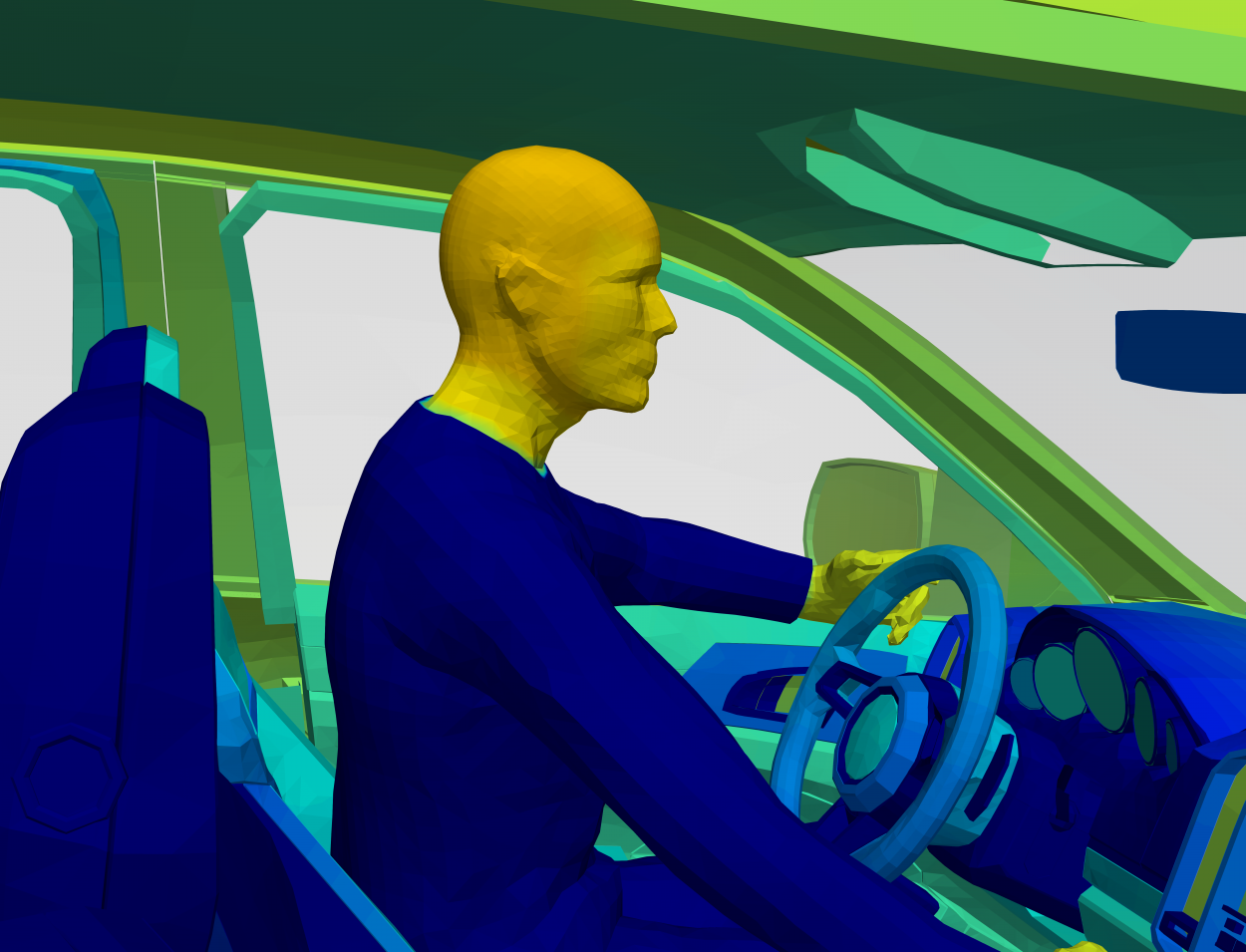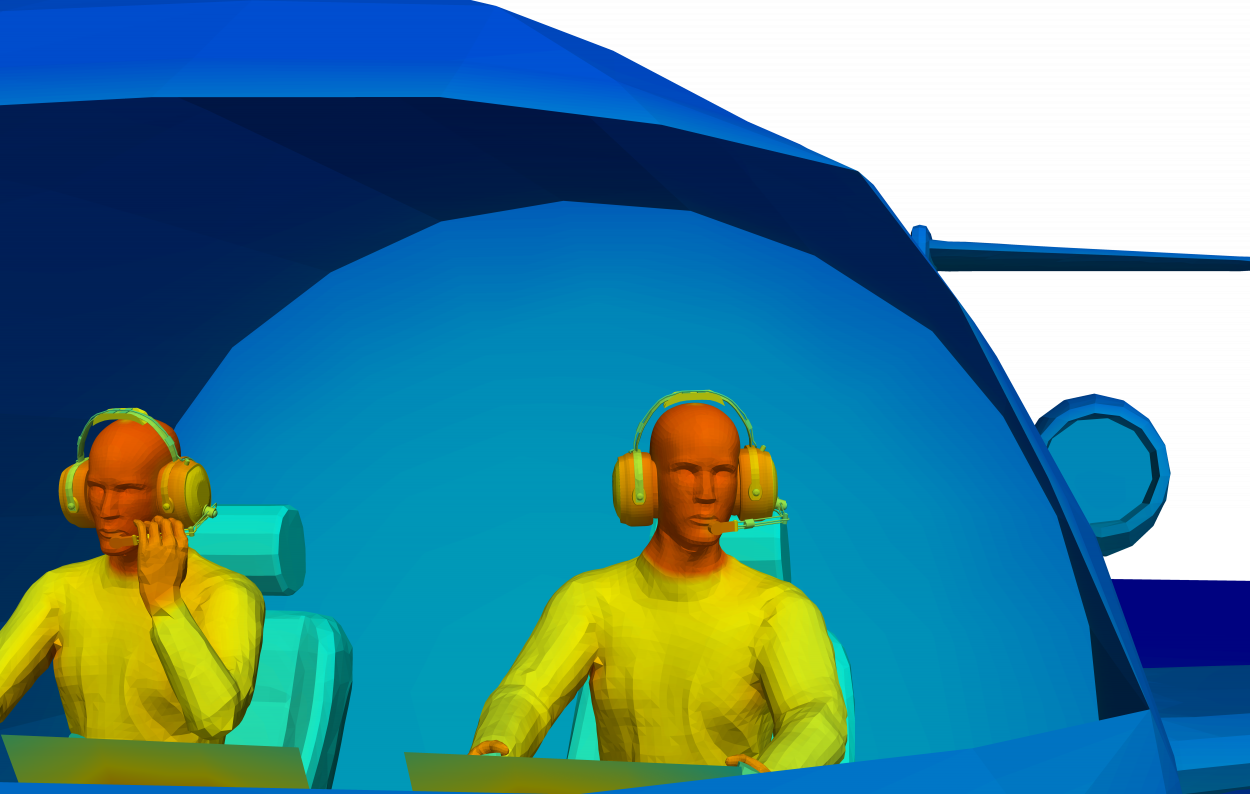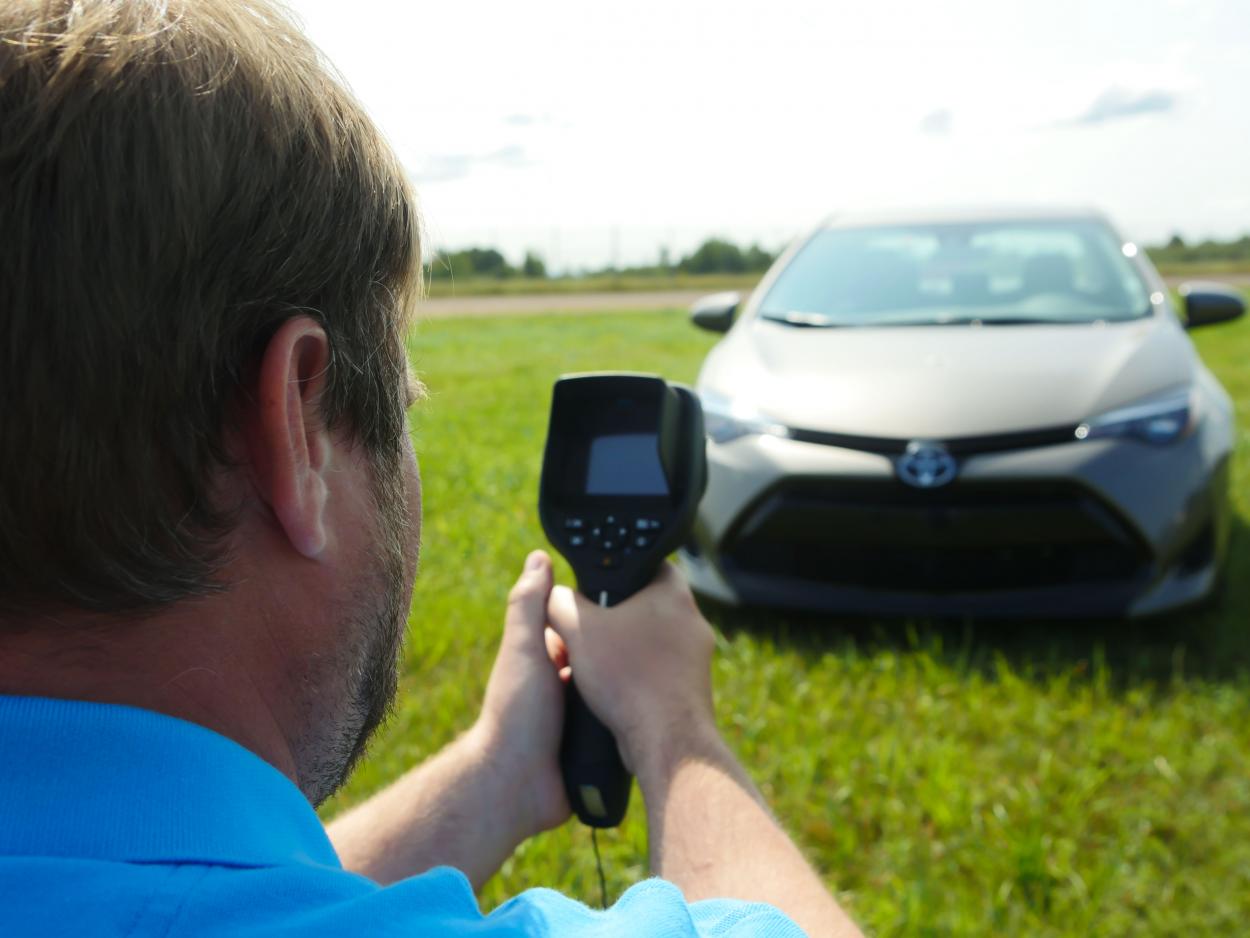User Experience is Essential for Product Acceptance
Simulation of human thermoregulation and thermal comfort will allow you to understand how your design will affect those who use it. Applying this process enables you to design a new vehicle and know if the driver will perceive the cabin as comfortable, or create a flak jacket for the military and know if soldiers will be effective in the desert while wearing it. Understanding human thermal comfort and effectiveness is a science in which we are experts. Let us help you gain a deeper understanding of how your product or design will resonate with your users.
Leading Technology for Human Thermal Simulation
Employing our very own thermal simulation software, TAIThermTM, along with the Human Thermal Extension, our team of engineers can provide you with actionable data to predict how comfortable (or effective) your user will be under various conditions.
By changing variables such as physiological size, height, weight, clothing ensembles, and metabolic rates, our engineers can predict how someone will feel while sitting in the cabin of a vehicle, wearing a VR headset, or in any other thermal environment of interest.
Our engineers will then be able to provide you with results from multiple comfort models (based both on environmental and physiological correlations) for you to understand the comfort, safety, and effectiveness of the human while they use your product.
Essential Features Provide You with Detailed Data
Berkeley Comfort Model
The Berkeley Comfort Model is an advanced set of metrics integrated into the Human Thermal Extension to assess localized and whole-body thermal sensation and comfort. It considers how comfortable a human is at precise segments of the human body, allowing deep understanding of complex asymmetric environments.
Male & Female Scalable Models
We can simulate your design using both male and female descriptions that are scalable by height, weight, and body fat content. This data allows us to offer a detailed look at thermal management for different human bodies.
Detailed Human Physiology Outputs
In addition to comfort metrics, our simulation provides detailed quantities describing the thermoregulatory response to the simulated environment. With these results, you can understand sweat rates, shivering rates, blood flow, skin wittedness, and other parameters. We can also predict skin and core temperatures to give you a complete understanding of human thermal state.
Commonly Used In:
- Protective clothing simulation
- Human effectiveness and safety
- HVAC optimization
- Window/glazing placement or material studies
- Localized building design
- Heated and cooled seats
- Heated steering wheels/radiant panels
- Textile optimization
- Moisture studies
Tools for Optimized Human Thermal Comfort
Our team can provide insight into a proper thermal management strategy for optimal human thermal comfort in your design. Let's talk and discuss a custom solution for your thermal management problems.
You Might Also Be Interested In:

Optimize Occupant Comfort
Because of the time spent in homes, offices, and vehicles traveling between the two, the automotive, architecture, and aerospace industries are all attempting to reach optimal occupant comfort for the utmost satisfaction of their customers. Our expert engineers have the knowledge and skills you need to predict cabin comfort and determine HVAC efficiency for your comfort strategies. They'll help you analyze localized heating and cooling, HVAC systems, and human sensation and comfort to ensure your customer's comfort.

Predicting Survival + Effectiveness
Predicting human thermal survival involves simulation across several distinct domains to be computed simultaneously – the environmental conditions over time, a detailed human physiology model that includes thermoregulation, and clothing models to capture both heat transfer and mass transfer resistance. Humans are thermally quite fragile and many critical biological processes are highly sensitive to temperature, including cognition. Thermal survival is limited to the study of how the body responds to dehydration, hypo- and hyperthermia, ignoring the situational effects of reduced cognitive capacity on the choices an individual makes when overheated or suffering from cold exposure.

Testing & validation services
Our thermal test experts will come to your site to collect real-world thermal data. Our team is equipped with tools that capture the complete operating environment, which allows for better simulations and more accurate predictions of performance.
After gathering test outcomes, our team will validate the simulation results from TAITherm by quantifying the error against physical test data. The validation process ensures that the model is accounting for all methods of heat transfer, and providing accurate results based on the operating environment.
Getting started
Let's talk
If you would like to learn more about our Human Thermal Modeling service and how it can provide you with an actionable design direction, reach out! We will demonstrate how our software will fit your specific requirements and help you understand what you will need to begin simulating human comfort, safety, and effectiveness.
Support
We are here to work with you at every step. We support our customers throughout your service project with excellent communication; we are only a phone call or email away. Our commitment to you never changes.